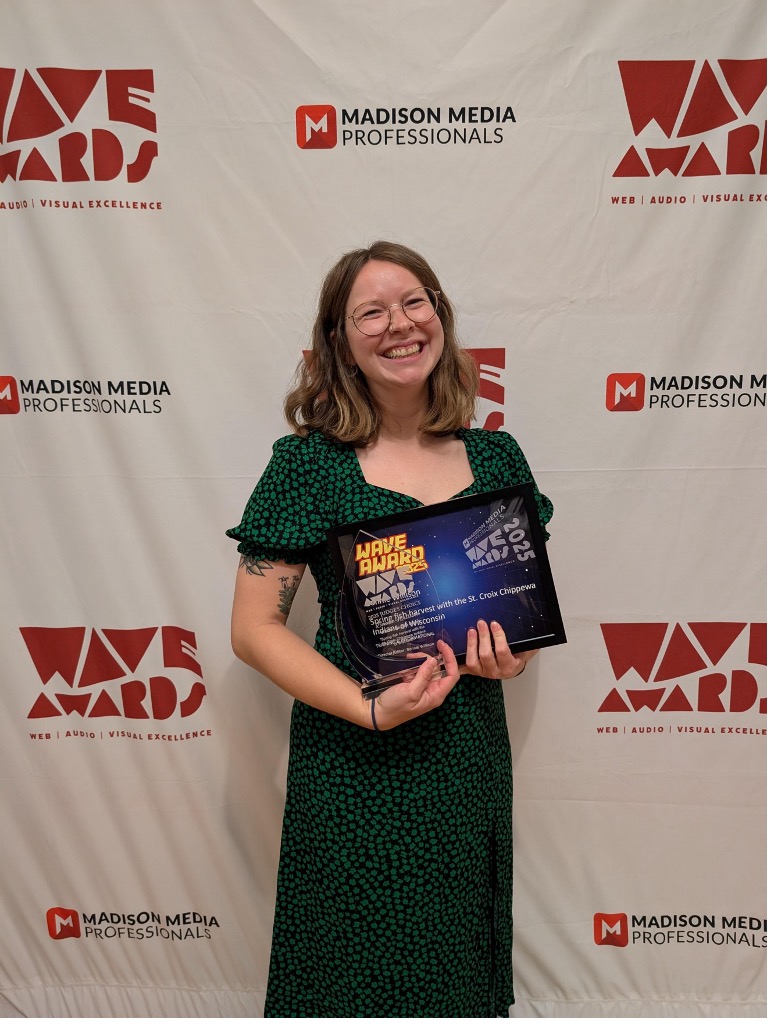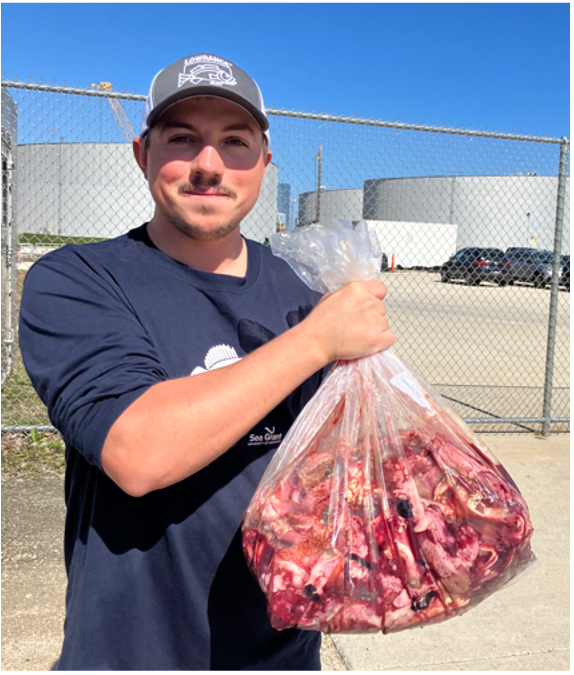Question: What’s the quickest way to convince a community that it needs to invest in resilience to climate change?
Answer: Show them exactly what would happen if a monster storm dropped a foot of rain on them.
The concept’s more formal term is storm transposition, and it’s what Evan Murdock, a University of Wisconsin-Madison graduate student, is using to try to convince decision-makers in Wisconsin coastal communities like Manitowoc and Two Rivers that they need to prepare their cities for the future possibility of frequent and severe storms.
The storm transposition research is led by UW-Madison engineering professor Ken Potter and UW-Extension statewide stormwater specialist David Liebl and funded by a Climate Societal Interactions-Sectoral Applications Research Program (CSI-SARP) grant from the NOAA Climate Program Office. Its application on the Wisconsin coast is supported by the Sea Grant Climate Change Adaptation Initiative.
Murdock’s focusing on—what else?— the superstorm that dropped more than a foot of rain on south-central Wisconsin in 2008, causing millions of dollars of damage and Lake Delton to flood.
“That’s the sort of storm climate change models are predicting will become more common,” noted Murdock.
Murdock and the project team are using historical precipitation data collected by NOAA’s Nexrad radar service near Milwaukee to create a grid that estimates the amount of rainfall that fell every 15 minutes during the 2008 storm. By overlaying that grid on a different watershed, they’re able to predict what would happen to the lake and stream levels in the affected area—more specifically, where might flooding occur and where dangerous infrastructure deficiencies might exist.
“One of the big challenges with adaptation work is that people want specifics—what do they need to change?” said Murdock. “Typically, we don’t have great answers, because there’s a ton of uncertainty with precipitation and how climate change will affect it.”
According to Potter, storm transposition accounts for the fact that communities don’t typically use continuous modelling to make their infrastructure decisions because it can be both expensive and impractical. Groundwater and carbon-dioxide models are great for academics, but not for engineers, planners, decision-makers or the public. As Potter noted, the level of assumptions and uncertainty involved in most models make it unlikely that any of those groups would adopt them.
“The truth is that people don’t necessarily understand the design principles involved in creating these models—what’s a 100-year event?” Potter said. “People are also experiential learners. It’s hard to say that there’s a one in 500 chance there’ll be a storm and have them have any deep understanding of what that means.”
Showing them is an entirely different matter. The 2008 storm data can easily be converted into an animated radar graphic, color-coded to represent the intensity of the rainfall over each part of the watershed. Engineers can then apply the data to flood-plain mapping they may already have done, and use it to identify possible weaknesses.
“The idea is that you can’t protect everything, but you can identify critical infrastructure, things like schools, emergency services, hospitals and key roadways,” explained Murdock. “Communities can look at that list and say, ‘This is something we can’t afford to lose.’”
Murdock plans to use the single storm as a bounding exercise, not necessarily a worst-case scenario—an event that could conceivably occur as climates adapt, even in areas of the state that don’t typically experience precipitation events of more than a few inches of rain in a given year.
“This gives us a little better chance of getting people to pay attention and invest in change,” said Potter. “We don’t have to talk about climate change. We can talk about an actual storm that actually did happen. It’s not imaginary.”
Potter and Murdock hope storm transposition can also be used to test whether a county’s current development ordinances are adequate to address the possibility of climate change-fueled storms. While most Wisconsin counties have regulations in place that address stormwater quality, few actually have ordinances that regulate stormwater quantity, the bigger issue created by massive amounts of rainfall. In the absence of regulation, developers could theoretically do nothing to account for flooding, leaving their projects and communities ill-prepared to withstand a major storm event.
For Murdock, the project is a great way to bring a sometimes confusing and contentious issue down to a level decision-makers can easily understand—and, hopefully, act upon.
“How do we communicate this in a way that’s meaningful?” he said. “People want to confront the issue of climate change readiness, but they’ve been looking for answers science isn’t prepared to give.”





